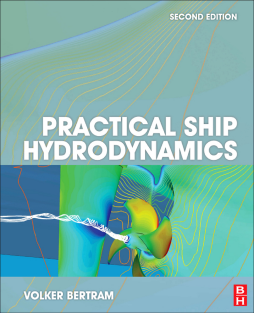
Additional Information
Book Details
Abstract
Practical Ship Hydrodynamics, Second Edition, introduces the reader to modern ship hydrodynamics. It describes experimental and numerical methods for ship resistance and propulsion, maneuvering, seakeeping, hydrodynamic aspects of ship vibrations, and hydrodynamic options for fuel efficiency, as well as new developments in computational methods and model testing techniques relating to marine design and development.
Organized into six chapters, the book begins with an overview of problems and approaches, including the basics of modeling and full-scale testing, prediction of ship hydrodynamic performance, and viscous flow computations. It proceeds with a discussion of the marine applications of computational fluid dynamics and boundary element methods, factors affecting ship hydrodynamics, and simple design estimates of hydrodynamic quantities such as resistance and wake fraction. Seakeeping of ships is investigated with respect to issues such as maximum speed in a seaway, route optimization (routing), structural design of the ship with respect to loads in seaways, and habitation comfort and safety of people on board. Exercises and solutions, formula derivations, and texts are included to support teaching or self-studies.
This book is suitable for marine engineering students in design and hydrodynamics courses, professors teaching a course in general fluid dynamics, practicing marine engineers and naval architects, and consulting marine engineers.
- Combines otherwise disparate information on the factors affecting ship hydrodynamics into one practical, go-to resource for successful design, development and construction.
- Updated throughout to cover the developments in computational methods and modeling techniques since the first edition published more than 10 years ago.
- New chapters on hydrodynamic aspects of ship vibrations and hydrodynamic options for fuel efficiency, and increased coverage of simple design estimates of hydrodynamic quantities such as resistance and wake fraction.
- Companion site featuring exercises and solutions, formula derivations and texts: http://booksite.elsevier.com/9780080971506/
Praise for previous edition: "Highly useful for graduate and post-graduate students, the book is also a professional reference work for naval architects and consulting engineers."--Maritime Journal
"The book combines otherwise disparate information on the factors affecting ship hydrodynamics into one practical, go-to resource. It is aimed at senior undergraduates and post graduate students. It will be useful for the practising naval architect, especially design/hydrodynamics technical specialists, and marine engineer as a reference work and as a means of updating their knowledge on how these important ship performance characteristics are, and can be, assessed."--Ship and Boat International, March/April 2012, page 48
